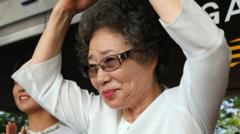As South Korean cafes like Starbucks confront the challenges posed by the 'Cagongjok' culture, which involves students and workers occupying tables for hours, a balance between accommodating these customers and ensuring a comfortable environment for others is being sought.
South Korean Cafes Navigate the Challenges of Student Workspace Domination

South Korean Cafes Navigate the Challenges of Student Workspace Domination
In Seoul's cafes, a cultural phenomenon called 'Cagongjok' sees students and workers monopolizing spaces for prolonged periods, prompting new guidelines from chains like Starbucks.
In the upscale neighborhood of Daechi, Seoul, cafe owner Hyun Sung-joo faces a significant challenge. His establishment frequently encounters a group known as Cagongjok—primarily young South Koreans dedicated to studying or working in coffee shops. Recently, one customer set up an entire workstation with two laptops and a six-port power strip, occupying a table for an entire day. "I ended up blocking off the power outlets," Hyun reflects. With the rising rent costs in the area, enduring this behavior makes it difficult to sustain the business.
The Cagongjok phenomenon is particularly prevalent in South Korea, where it exceeds similar trends in Western countries. Customers often linger with an array of gear, prompting Starbucks Korea to implement new nationwide guidelines aimed at curtailing extreme cases of space monopolization, such as using desktop monitors or partitioning off their workspaces. The chain asserts these measures are designed to foster a more comfortable environment without directly asking customers to leave.
Amid these new policies, a visit to Starbucks reveals a mixture of reactions. An 18-year-old student, preparing for the tough university entrance exam known as "Suneung," shared her routine of studying from 11 AM to 10 PM, often leaving her belongings unattended. While customers have been observed respecting the new measures, reports suggest that some still occupy seats for long periods, making it hard for others to find space.
Responses to Starbucks' regulations vary. Many welcome it as a much-needed adjustment, as those seeking social interaction or relaxation face challenges finding seating. However, critics argue that the initiative represents an overreach, marking a shift from the previously accommodating atmosphere.
The issue has sparked a broader conversation in South Korea, highlighting the intensely competitive nature of society and its implications on public spaces. With a report showing a 48% increase in coffee shops in the past five years, the popularity of Cagongjok grows, especially among Gen Z students—70% of whom study in cafes weekly.
Cafes across the country have adopted various strategies to manage space usage. One owner, who has noticed clients monopolizing tables, has enacted a "No Study Zone" policy to encourage conversation instead of prolonged silent study. Many establishments offer amenities suited to Cagongjok, while others are limiting study time to prevent conflicts between customers.
For some, cafes represent more than just a space to work; they provide a sense of safety and comfort that may not be available at home. Yu-jin Mo, who describes a challenging upbringing, finds solace in studying at cafes and previously owned one herself to cultivate a welcoming atmosphere.
Cultural expert Professor Choi Ra-young attributes the rise of Cagongjok to South Korea's hyper-competitive reality, suggesting that addressing this issue requires developing more inclusive public spaces for studying without disturbing fellow patrons. She advocates for a careful balance that acknowledges the needs of individuals seeking a conducive study environment while maintaining the integrity of communal spaces in cafes.

















